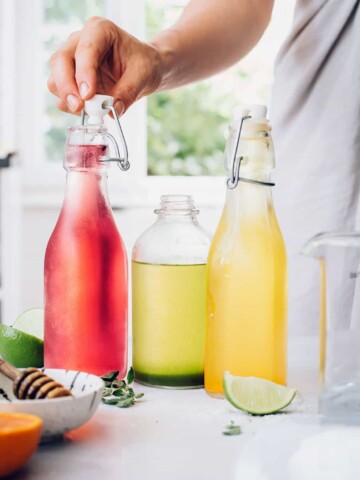If you think aloe vera is good for your skin when applied topically, just wait until you try these edible aloe vera recipes that nourish from the inside out. From juices and smoothies to ice cream and salads, these tasty aloe recipes are a great way to get a daily dose of this healing plant.

The Aloe vera plant is a beautiful, spiky succulent, a member of the lily family. Aloe is not only easy to care for (and lovely to look at) but has also been used for thousands of years as a multi-purpose medicinal plant [source].
This miraculous plant is on everyone’s basic list of home remedies, and while most of us think of aloe as just a burn treatment, its beauty uses are endless. Aloe is the perfect all-purpose plant to keep on hand—and to add a little greenery to your room.
Of course, aloe is also edible, and it’s a common ingredient for recipes promoting beauty from the inside out.
Jump to:
- Benefits of Aloe Vera
- Can You Eat Aloe Vera?
- 1. Aloe and Cucumber Water from Hello Glow
- 2. Aloe Vera Martini from Hello Glow
- 3. Double Chocolate Cashew Aloe Ice Cream from Flexitarian Nutrition
- 4. Aloe Vera, Mint, and Tequila Frozen Jelly from Front + Main
- 5. Hydrating Kiwi Aloe Popsicles from Creative Green Living
- 6. Healing Aloe Smoothie from Hello Glow
- 7. Raspberry Aloe Water from Hello Glow
- 8. How to Make Aloe Vera Jelly from Full of Plants
- 9. Poached Aloe Yogurt from No Recipes
- 10. Love the Liver Juice from Hello Glow
- 11. Mini Quiches from Cooking with Manuela
- 12. Dairy-Free Papaya Lassi from Ascension Kitchen
- 13. Aloe Vera Salad from How Daily
- 14. Watermelon Coconut Aloe Juice from Will Frolic For Food
- 15. Aloe Vera Lemonade Slush from Well Vegan
- FAQ
- References
Benefits of Aloe Vera
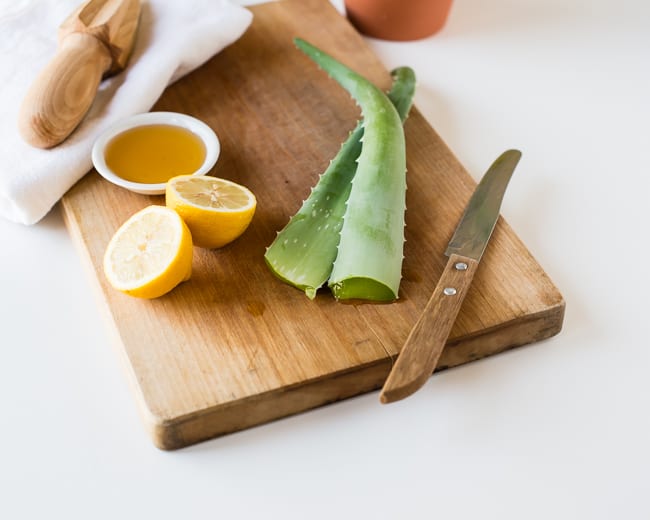
Skin Health
Aloe vera is commonly used topically to soothe skin, especially sunburns, due to its cooling properties and hydrating effects. It also helps in treating burns, cuts, and other skin irritations.
Aloe vera supplements have been shown to improve facial wrinkles and skin elasticity [source], making them a must-have for natural beauty lovers. Aloe vera is also high in antioxidants, making it a powerful tool in the fight against free radicals and the damage they can cause to the body.
Digestive Benefits
When taken internally, aloe vera juice can help with digestion and bowel regularity, and it can also be detoxifying and help normalize the healthy bacteria in your gut. Aloe vera also contains compounds that may help in reducing inflammation.
Nutrient Rich
Aloe vera juice is a rich source of vitamins and minerals, including vitamin B, C, E, and folic acid. They have identified 75 potentially active constituents in the plant, including vitamins, minerals, amino acids, and enzymes [source], and it has well-reported anti-inflammatory, antibacterial [source], and antiviral qualities.
Can You Eat Aloe Vera?
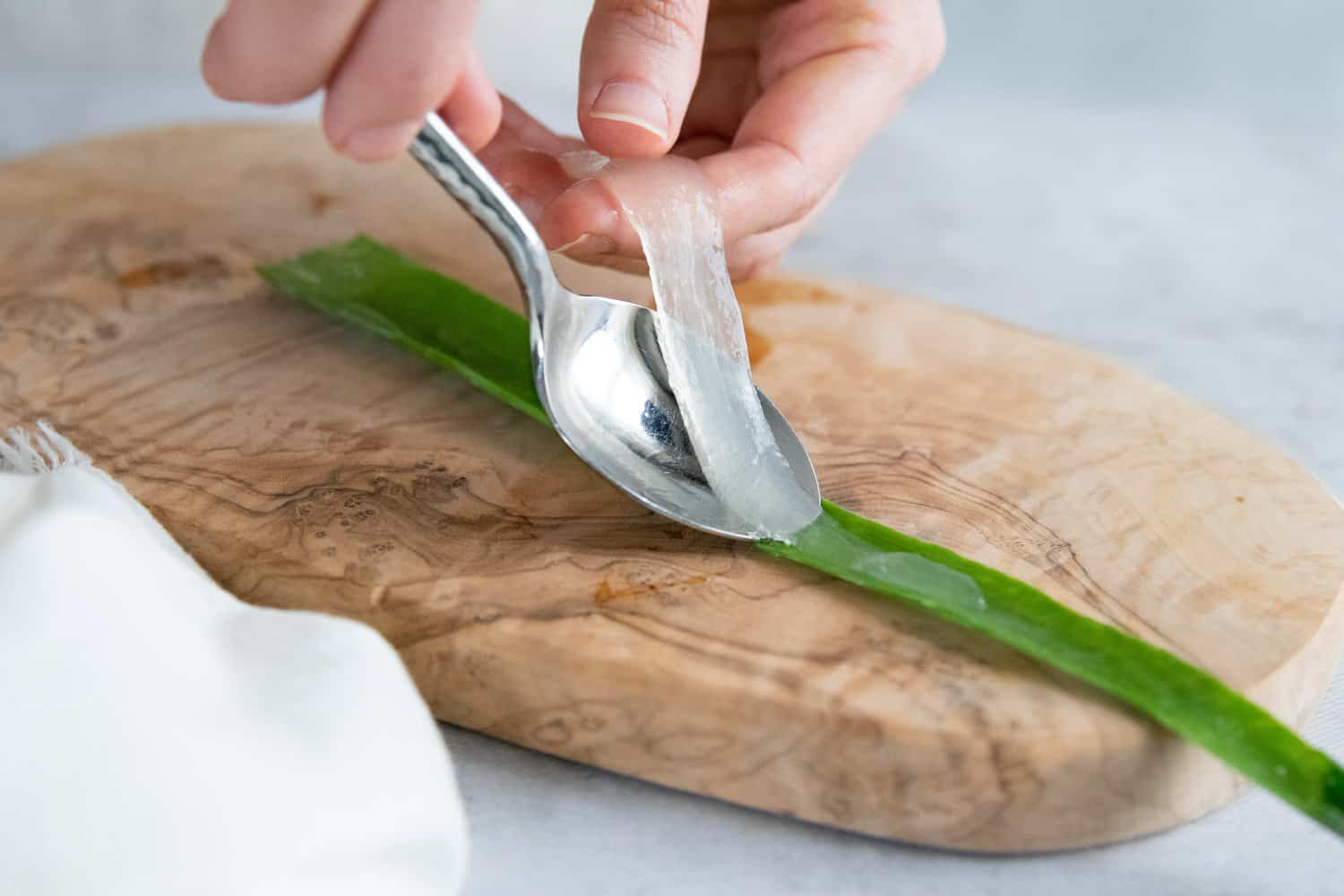
Yes, it is safe to consume the inner gel of the aloe vera leaf, which is commonly used in food and beverages. However, the outer leaf pulp (latex) should not be ingested as it contains aloin, which can be harsh and cause digestive issues.
Buy or DIY: Learn how to harvest your own aloe vera gel or buy aloe that's purified, decolorized or organic. These products have the aloin removed and are generally safe for consumption.
Mask the flavor: You can eat aloe vera, although the taste isn’t for everyone. When eaten, aloe vera has a slightly bitter taste that may not be appealing to everyone. However, it’s easy to mask the flavor by combining it with sweet or tangy fruits.
Not just for smoothies: The gel-like substance inside the aloe vera leaves can be added to smoothies or juices to provide a range of health benefits. It pairs well with citrus and other fruits, yogurt, and herbal flavors.
Yes, this healing ingredient is popular in aloe drinks and juices, but there are more things to make with aloe vera—we’re also sharing interesting new ways to use aloe in desserts, cocktails, and snacks.
Start small: Aloe has cleansing properties for the digestive tract. Start with a small amount of aloe vera juice daily (1–3 ounces) to see how your body reacts, and be sure to read the label directions before ingesting aloe vera juice because it can have laxative effects.
1. Aloe and Cucumber Water from Hello Glow
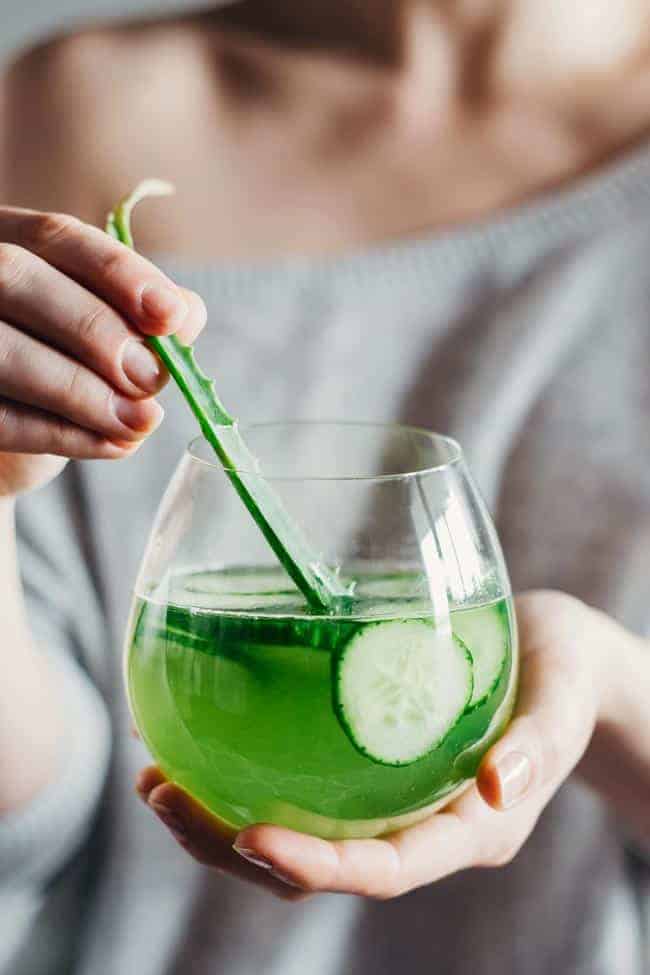
Let’s be honest: plain aloe vera juice does not taste good. Turn it into a hydrating aloe water with coconut water and cucumber to sweeten things up.

2. Aloe Vera Martini from Hello Glow
Sipping on a martini you know is good for you may sound unlikely, but this aloe vera cucumber cocktail makes it totally likely!
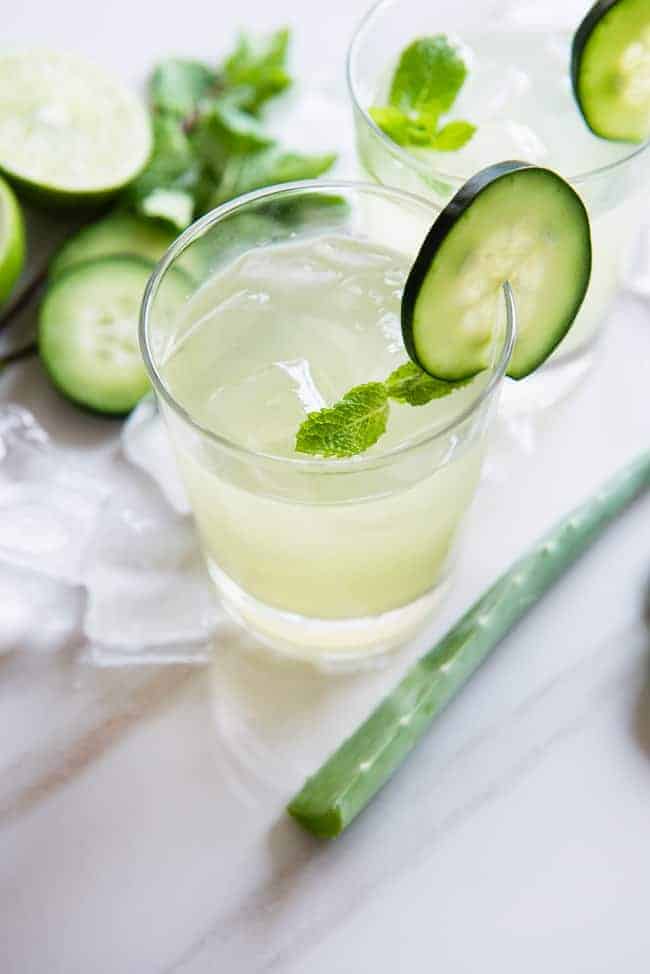
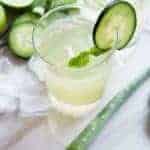
3. Double Chocolate Cashew Aloe Ice Cream from Flexitarian Nutrition
Just 5 ingredients—all of them vegan and all of them healthy! This double chocolate ice cream has a cashew base and just enough aloe vera juice to make it guilt-free.

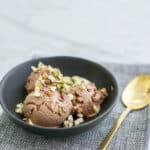
4. Aloe Vera, Mint, and Tequila Frozen Jelly from Front + Main
Somewhere between a granita and a jelly shot, frozen jelly is the best treat for summer! This recipe mixes refreshing mint, basil, and lime with hydrating aloe and naughty tequila.


5. Hydrating Kiwi Aloe Popsicles from Creative Green Living
We all need an extra boost of hydration these days, which makes these kiwi aloe popsicles a midsummer night’s dream come true!
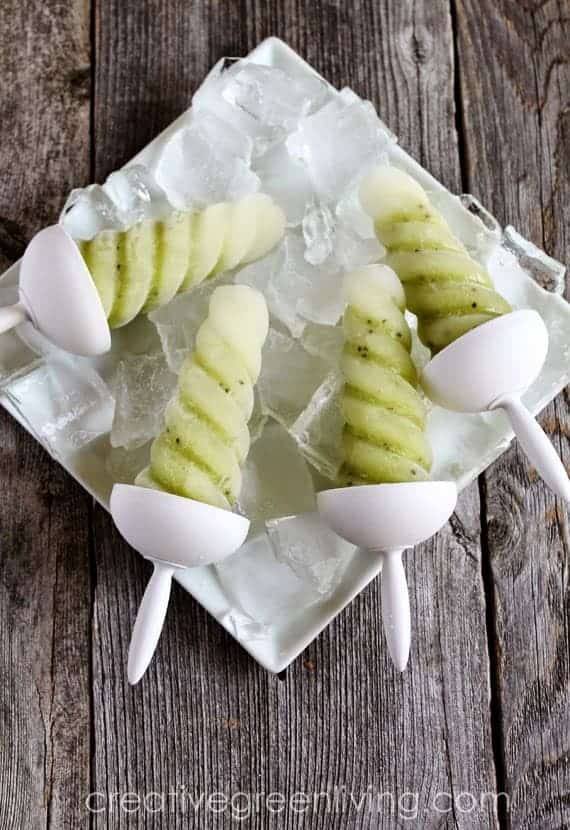
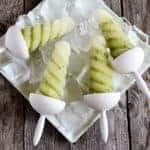
6. Healing Aloe Smoothie from Hello Glow
This smoothie—which uses the fresh gel from inside the aloe leaf (although you could use pure store-bought juice)—is naturally sweet, using organic apple juice and strawberries to help hide any unpleasant taste.
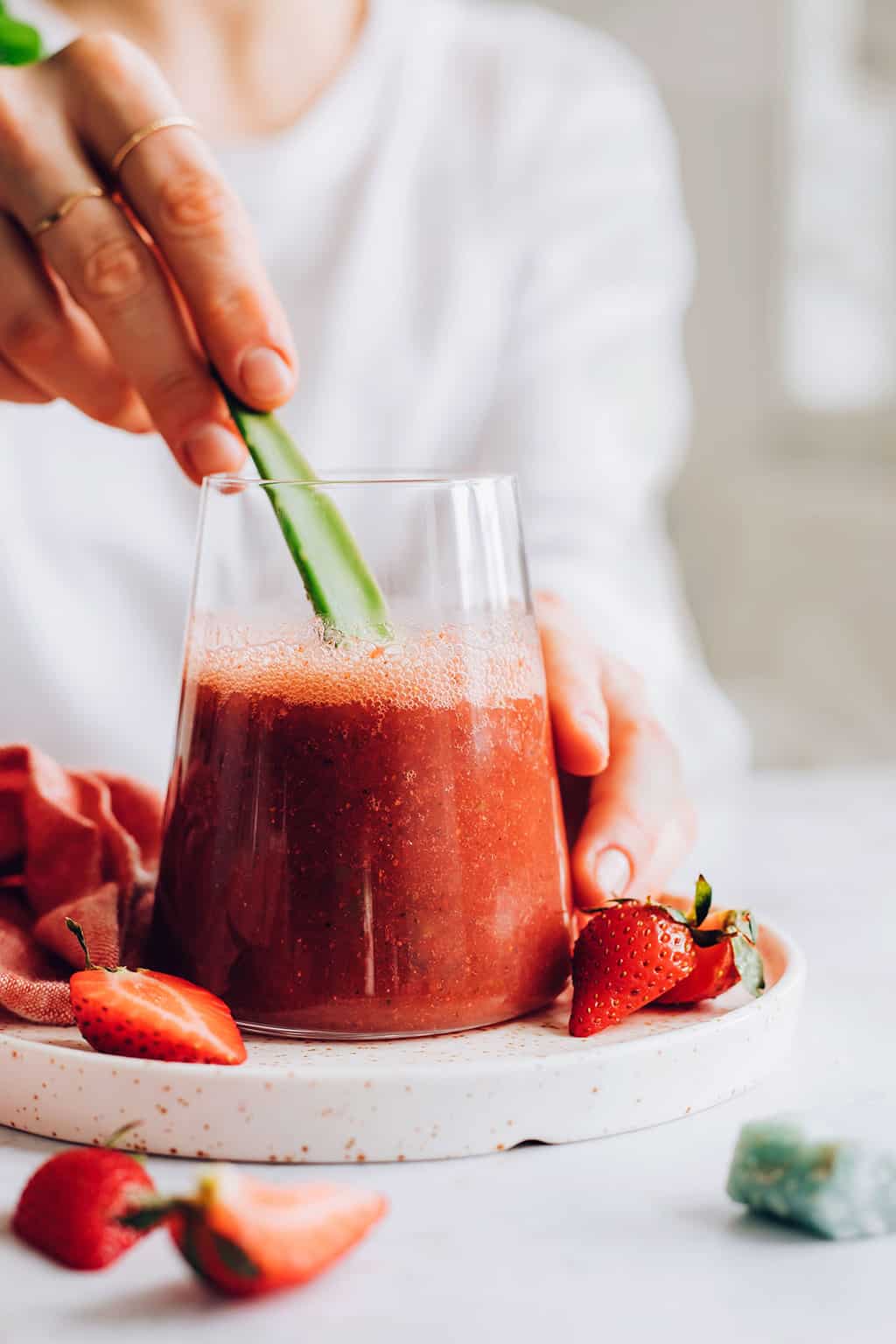

7. Raspberry Aloe Water from Hello Glow
Protect and repair your skin with this tasty, drinkable combination of aloe vera, raspberries, and beetroot powder.
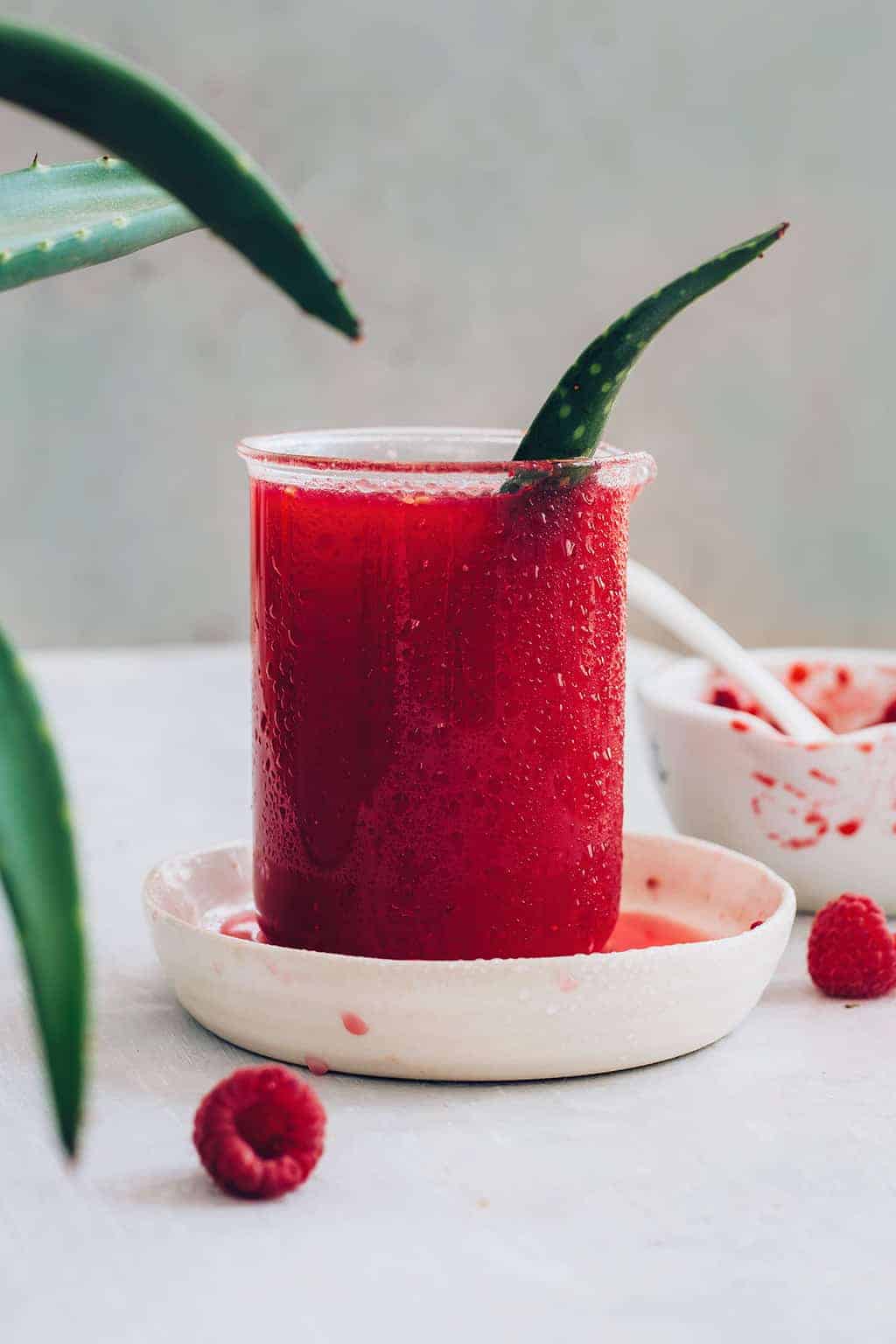

8. How to Make Aloe Vera Jelly from Full of Plants
Harvest your own aloe vera and cut it into small cubes to create an easy and versatile jelly. You can then add it to tea (for a bobba-like tea), lattes, lemonade and other drinks.
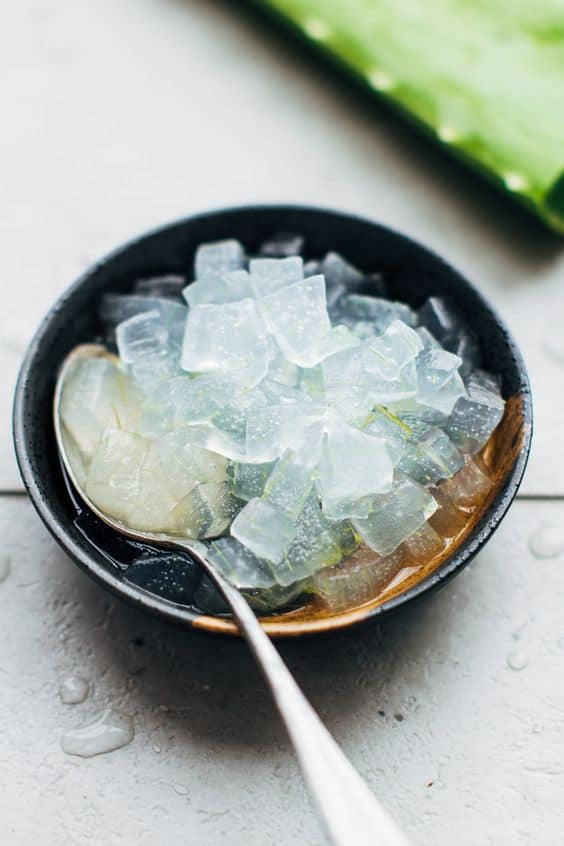
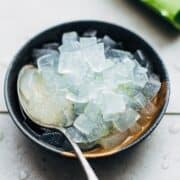
9. Poached Aloe Yogurt from No Recipes
Why limit the use of aloe to drinks when you can just as easily add it to your yogurt? This simple recipe makes a very good case for poached aloe, which only adds to the health benefits of the probiotic snack.
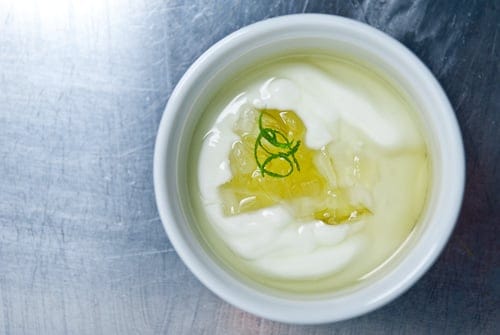
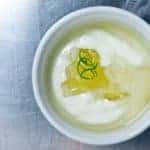
10. Love the Liver Juice from Hello Glow
For a liver detox, juice is always a good option! This particular recipe combines healing aloe with cucumber, celery, lemon, parsley and cilantro.
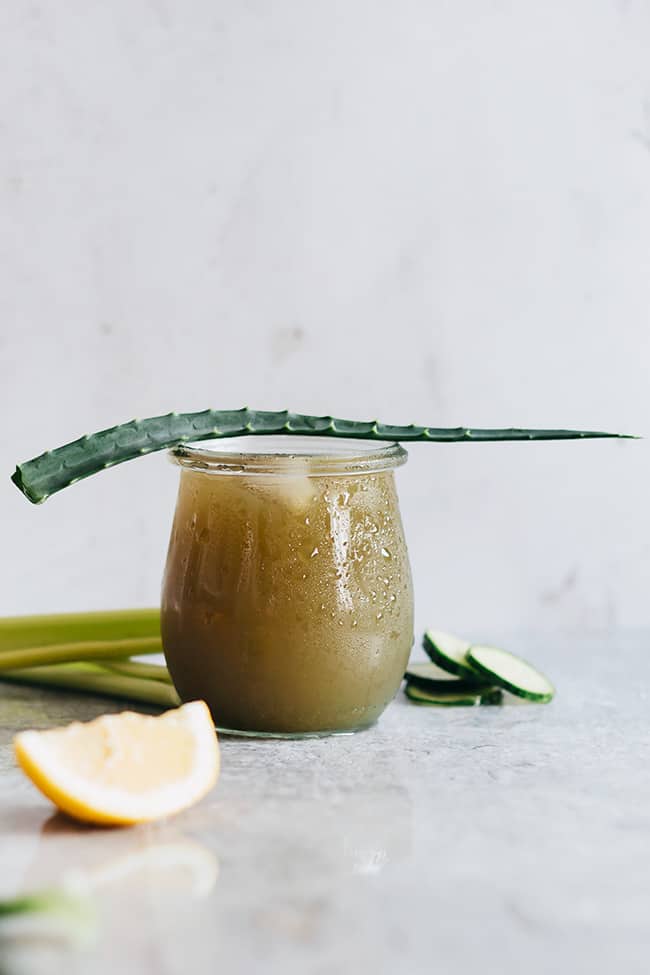
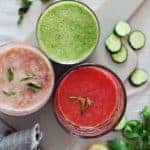
11. Mini Quiches from Cooking with Manuela
Mini quiches are the perfect breakfast or brunch treat. This recipe is made with healthy aloe vera yogurt, red peppers, and parmesan.
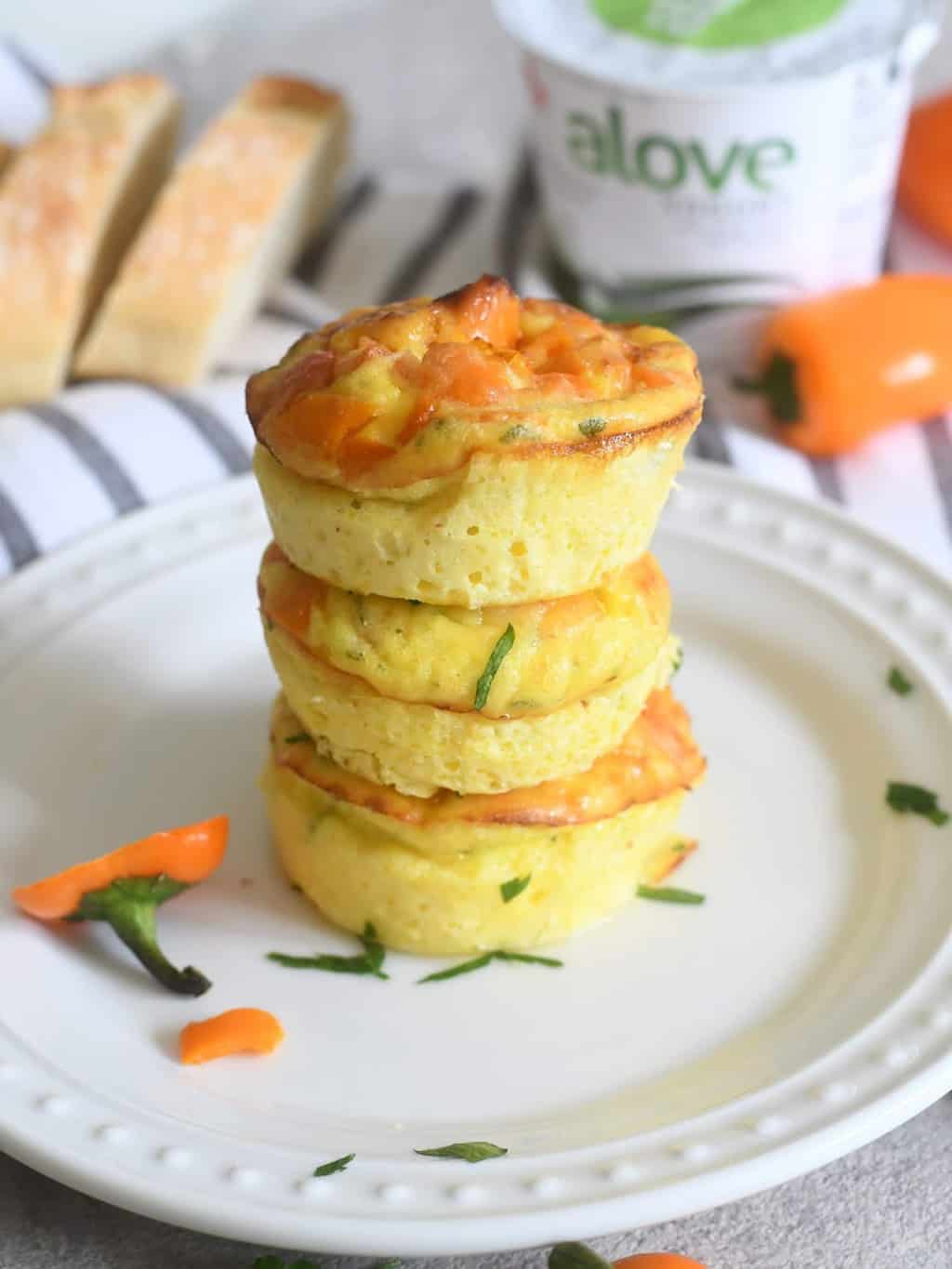
12. Dairy-Free Papaya Lassi from Ascension Kitchen
This version of a papaya lassi comes with digestive benefits: it’s rich in probiotics and digestive enzymes—all without the heaviness of dairy. Aloe, cardamom, Manuka honey, lime, and rose combine in a healthy and equally tasty smoothie.
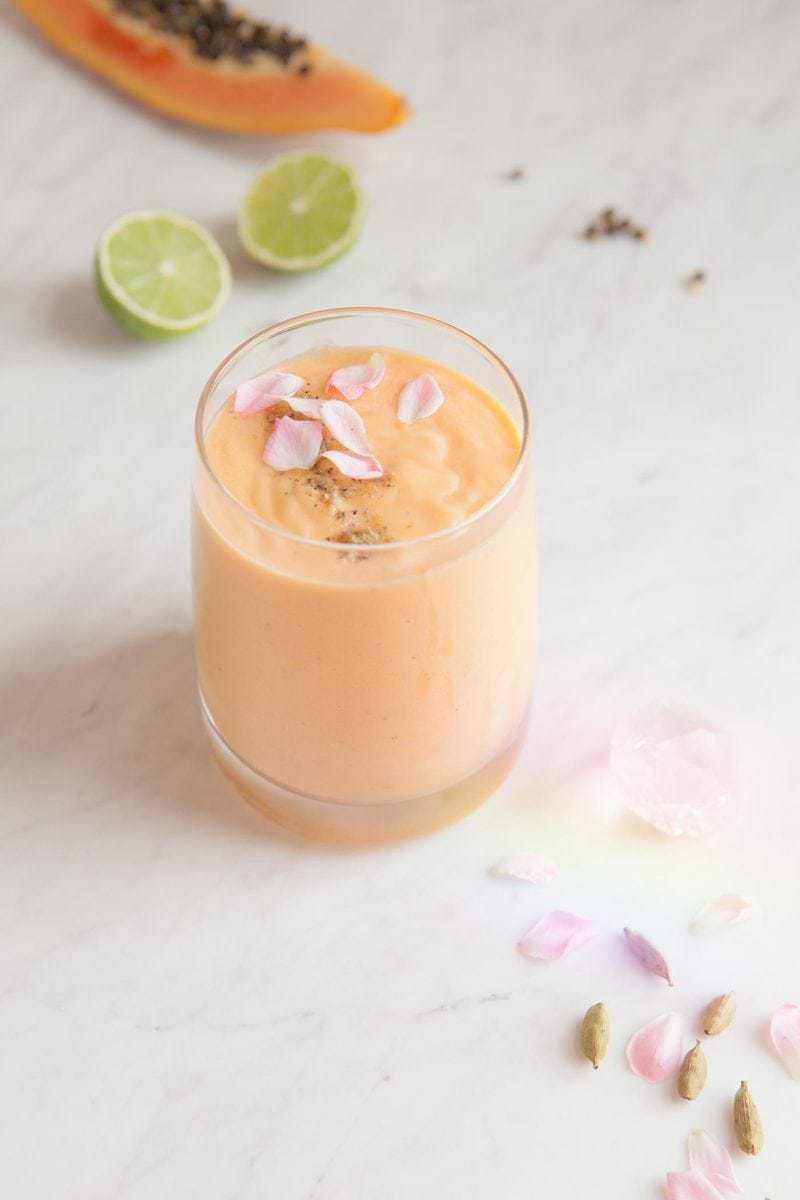
13. Aloe Vera Salad from How Daily
Ever considered adding aloe to your salad? You can totally do that and make it tasty, too. This recipe from How Daily is made with shrimp, jellyfish, mango, carrots, and cucumber, and it’s super refreshing.

14. Watermelon Coconut Aloe Juice from Will Frolic For Food
Rehydrate like a goddess with this watermelon, coconut water, and aloe juice garnished with basil leaves. This is pretty much the ideal summer refresher.
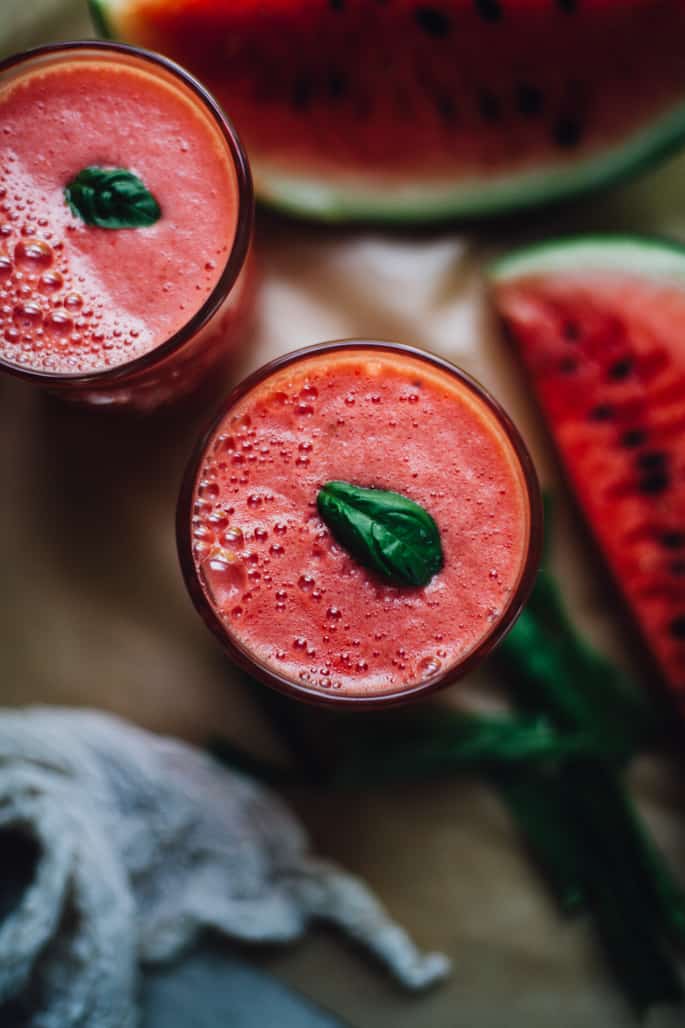
15. Aloe Vera Lemonade Slush from Well Vegan
When the weather gets warmer, this lemonade slush with aloe will become your best ally!
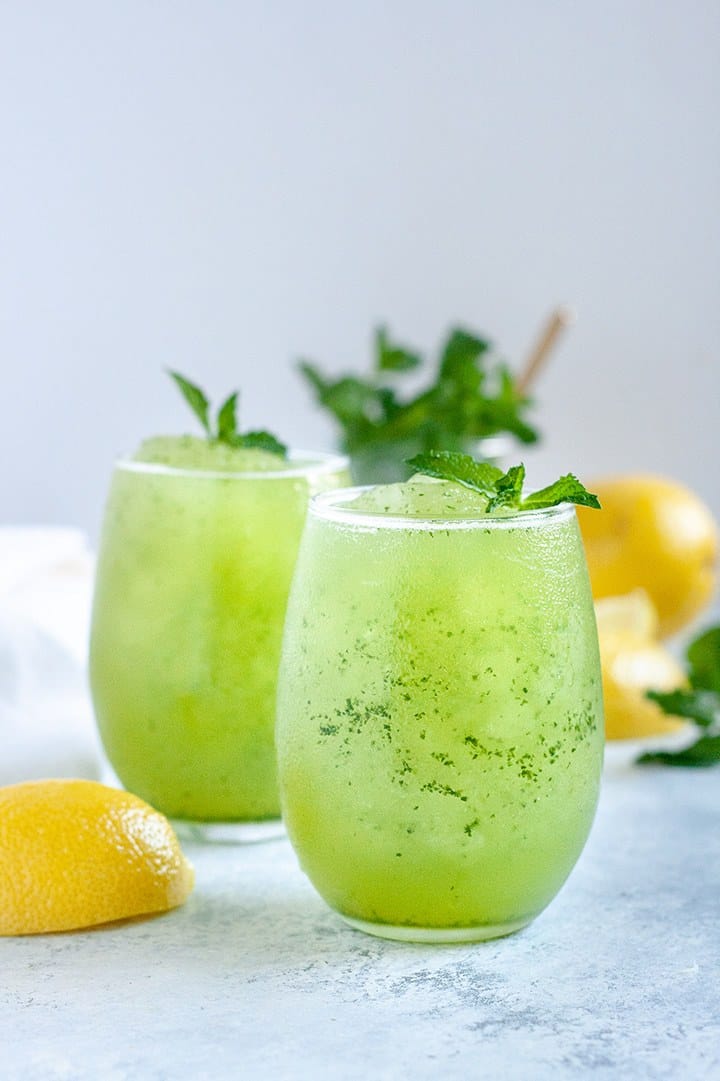
New to the world of aloe? Learn how to harvest it and what to do with it!
FAQ
Moderation is key when it comes to aloe vera juice. It is usually safe to drink about 2 to 4 ounces a day. Start with a small amount to see how your body reacts before incorporating it regularly into your diet.
You can easily add a small amount of aloe vera juice to smoothies, juices, salads, and desserts. It can have a bitter flavor so mask it with citrus or other fruit flavors.
Aloe vera juice can help support digestive health, provide hydration, and may have detoxifying properties. It's also known for its anti-inflammatory effects and can boost the immune system.
References
References
Manvitha K, et al. Aloe vera: a wonder plant its history, cultivation and medicinal uses. J Pharmacogn Phytochem. 2014.
Cho S, et al. Dietary aloe vera supplementation improves facial wrinkles and elasticity and it increases the type I procollagen gene expression in human skin in vivo. Ann Dermatol. 2009.
Foster, et al. Evaluation of the nutritional and metabolic effects of aloe vera. In: Herbal Medicine: Biomolecular and Clinical Aspects. 2nd ed. Taylor & Francis; 2011:(Ch) 3.
Najatzadeh-Barandozi F. Antibacterial activities and antioxidant capacity of Aloe vera. Org Med Chem Lett. 2013.
This article was medically reviewed by Dr. Gina Jansheski, a licensed, board-certified physician with more than 20 years of practice experience. Learn more about Hello Glow’s medical reviewers here. As always, this is not personal medical advice, and we recommend that you talk with your doctor.
334
